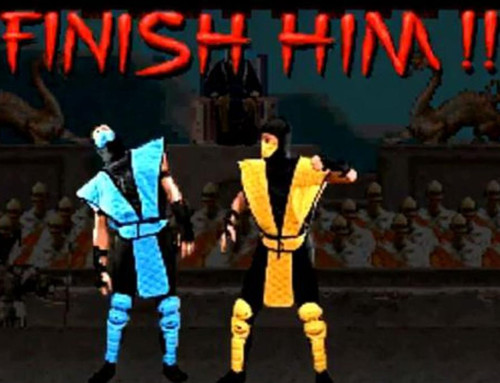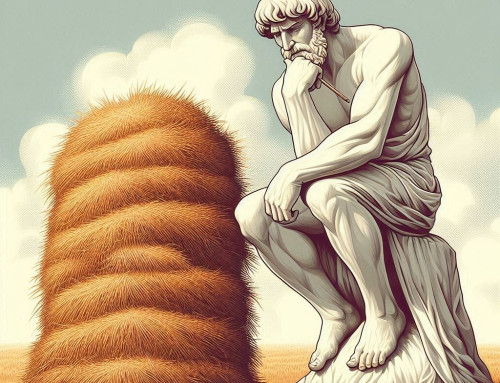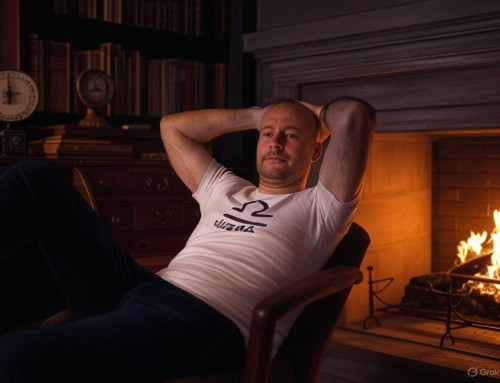“My mind is made up, don’t confuse me with facts.” – Seemingly the battle cry of our nation. I couldn’t find who this exact quote was attributed to, as it seems to be uttered by, sadly, far too many people. Let’s be honest, we all have followed this quote, even if we didn’t verbalize it. Our parents, friends, pastors, neighbors, political parties, etc., all help shape our opinions on what to believe, what is good and what is bad. The issue is that we forget to question these opinions as we blindly trust these individuals and groups. To make matters worse, with the advent of the Internet and social media, we have connected with more like-minded individuals throughout the world and, with little to no resistance, have accepted their thoughts and opinions as fact. And now, far too many people believe the world is flat…yes, a growing number of people truly believe that.
And, of course, the martial arts are no exception. The misinformation, myths and misconceptions in martial arts is mind boggling. To make matters worse, even when people have the truth bluntly punched in their nose, they still refuse to open their minds. When I was in the third grade, my brothers gifted me, “The Simpsons Sing the Blues” cassette tape for Christmas. Shut up, it was awesome! Remember, I was in the third grade and the Simpsons were HUGE. Don’t judge me if I happen to still have it in my music rotation. And also, don’t judge me that I still have a cassette player. Anyway, point being, in the insert of the cassette there was a name and a picture of each of the main characters and the people who voiced them. To my shocking surprise, Bart Simpson was voiced by a woman, Nancy Cartwright! My mind was blown! The foulmouthed cartoon boy I looked up to was actually a woman?! I could hardly believe it, but there it was, in print. So, I did what any third grader would do when their world gets flipped upside down, I told all of my friends. One by one, they didn’t believe me. Not only did they refuse to believe me, they all stopped being friends with me, stating I was lying and trying to talk bad about the Simpsons. Sadly, and pathetically, I never really gained those friends back. We became friendlier over the years, but nowhere near as close as a friend would be. All because they were convinced that Bart Simpson was voiced by a man and refused to believe otherwise. It took me having to bring the cassette in to show them the proof. Even then, they held it against me that I shattered their world. It just goes to show how deep our beliefs are and how resistant we are to change if we don’t like it or if it proves wrong someone we look up to.
I first started my martial arts journey in October of 1994, if I remember correctly. My oldest brother signed us both up with the intention of doing Hapkido. Neither of us had any idea what Hapkido was. All I had heard of were the basics, Karate and Kung fu, and recognized the name of Taekwondo but knew nothing of it. We briefly watched the Hapkido class and were instantly in love. We had never seen grappling, throws, joint locks, ground techniques and pressure points before. We had only known of the kicks and strikes we saw from the movies. We were sold.
However, there was an issue. The only students in the class were law enforcement and I had to be at least 16, I was only 13. My older brother was allowed in, but the instructor said I could train in Taekwondo instead until I was old enough. I begrudgingly accepted…and then secretly trained Hapkido at home with my brother (shhhh…don’t tell my instructor!). Even while training in Taekwondo, I was focused more on Hapkido. I didn’t hate Taekwondo, I rather enjoyed it, I just didn’t respect it the way I should have. I felt, and had convinced myself, that Hapkido was the better art and Taekwondo was for those who couldn’t do Hapkido, whether due to age requirements or physical limitations or those who were intimidated by Hapkido. The longer I trained in Taekwondo, however, the more I began to respect it. Yet, I never put as much focus or effort into it as I did Hapkido. After over a year of training in Taekwondo, my instructor noticed my maturity in class and sought out, and obtained, permission from his instructor to allow me to begin training in Hapkido just before my 15 th birthday. I was thrilled, I was pumped, I was psyched, I was in a lot of pain that first week of Hapkido as I got pummeled on by large adult law enforcement that seemed to know nothing less than full force against my 15-year-old, 125lb frame….and I loved it! I also, unfortunately, quit Taekwondo. Again, I enjoyed it, but I just didn’t think it had anything to offer over Hapkido.
The problem was, I had come to that conclusion before I even started Taekwondo. I didn’t return to Taekwondo until numerous years later when I reached my 3rd Degree in Hapkido. I foresaw myself moving away in the near future and wanted to obtain my black belt in Taekwondo before leaving so that I could begin teaching Taekwondo, as well as Hapkido, when I moved away. Flash forward another few years where I discovered and researched more about Taekwondo and its origins. I finally began to understand the science and power of Taekwondo. Over a number of years and actively researching, discussing and training with great Taekwondo practitioners, my respect and love for Taekwondo began to grow immensely. It took too long for me to respect and love Taekwondo. The frustrating part is that it was my own fault that I held back truly learning the art. I can’t help but wonder how much farther a long I’d be in my training if I was more open minded. Not just in my Taekwondo training, but my Hapkido training as well. There are numerous techniques in Hapkido that are greatly improved when you add the Taekwondo philosophy of sine wave to them. I’ve made it a point to never judge a martial art or even a school or instructor until I’ve thoroughly experienced them. That open mindedness has led me to many different seminars and classes in which I learned a great deal of technique and thoughts from other styles and instructors that have massively improved my own programs with Hapkido, Taekwondo and Gumdo.
Chances are, if you know at least a little about martial arts, and are not a Taekwondo practitioner, just reading the name, “Taekwondo” made you roll your eyes. I’ve received numerous emails and phone calls asking about my classes that have consisted of scoffing at Taekwondo…yet when asked if they have ever studied Taekwondo, the answer is either, “No” or “briefly years ago”. So much certainty in their decision based on so little knowledge and experience. This assumption that a style is bad or ineffective, no matter what the style, is ignorant. If you’ve taken martial arts, or have had a discussion based on martial arts, chances are you’ve heard the question…or someone’s opinionated answer of, “What style of martial arts is best?” I’ve heard a hundred answers to this pointless question.
Usually it depends on what art is currently popular based on a recent movie, a new style being introduced into the Olympics, or as is the case in recent years, the UFC popularizing a couple styles. Many who are long time practitioners and study many arts will tell you it’s not the style but the teacher and/or the student. This is definitely true as all styles have their merit. However, there was an answer to this question I heard years ago, though I don’t recall who stated it. His response was, “each martial arts style is best for what it was created for”. I thought this was a brilliant answer to a difficult question.
If you look through the history of each style, you’ll see in most cases that there is a reason why it came about. Not just because someone was bored and decided it would be cool to make a new style. Though I’m sure there are plenty of people that have gone that route…but not likely those styles that are well known. Some styles came about due to a need for physical self-defense. Some were created as sport. Some geared towards physical or mental wellness.
Take Taekwondo for instance. My apologies for the history lesson about to be given to those who hate it: Taekwondo can be broken down into 3 major branches. ITF, WT (formally WTF…you can understand why they changed the name), and ATA. Many don’t realize that it is a very modern martial art. It was developed in 1955. Look back at the reasons why though. Korea had just gone through some serious wars and changes and somewhat felt as if they had lost their identity. So South Korea looked to General Choi, who had considerable martial arts experience, to develop a self defense system for their military, and eventually, their country. General Choi, mind you, was a very small individual, so the art of Taekwondo was built very scientifically to overcome strength issues when defending oneself. Even to the extent of testing the techniques at universities with, at the time, the latest technology to refine the techniques for power and efficiency. It was also used as a way to bring South Korea together as a country, so the art is littered with history and iconic figures from Korean history. In 1969, the ATA (American Taekwondo Association) was formed as a separate form of Taekwondo that catered more to the “flashier” kicks of Taekwondo, which appealed to a wider range of practitioners who may have been bored with the heavier training of the basics in the lower ranks (where many students quit). Then, in 1973, The WTF (World Taekwondo Federation, now World Taekwondo) was created as an alternate version of Taekwondo to the original Taekwondo (which become the ITF – International Taekwondo Federation), after the South Korean government ousted General Choi for his allowing of Taekwondo to be taught in North Korea. The WTF, now WT, went the route of sport with the hopes of being accepted into the Olympics to help more widely spread the name and art, which it successfully did as it’s now the official sport of South Korea.
The point of this bastardized history lesson of taekwondo is to point out that even within one martial art style, there can be many different variations. From self defense to sport to “flash”. So when I hear a potential student scoff at Taekwondo when I mention it being a great art for self-defense, I have to assume they’ve learned about Taekwondo through the flashier versions or sport versions that don’t cater as much to the self defense portion of the art or have studied from an instructor who received their black belt online or through an “advanced” 1 year version…*eye roll*. I’m also less likely to take that person on as a student knowing that if they are that close minded about a martial art, then I don’t really want to deal with that same close mindedness throughout class. The important thing to know when trying to find a martial arts style that is best for you, is to know what it is you want to get from the art you want to train. Then ask questions to area instructors and practitioners. Research what a style is all about and how it came about, not just watching poorly done videos of demos that don’t really demonstrate the art more than it tries to spice things up to get people interested. There is ten times more misinformation out there than there is proper information. Take the time to educate yourself before making a decision, not just when it comes to martial arts, but in all of life. And as mentioned above, the instructor has more to do with the success of your goals than the art being practiced.
Understand that trusting certain individuals, such as the ones listed at the onset of this article, is critical for efficient navigation through life. However, properly timed questioning of everything you know is essential to positive change and self-improvement. They say that 80% of what we know in life is learned before we are 7 years old! Our world is shaped in 7 short years before we close our minds to anything new and let go of learning. So, lets collectively work to lower that 80% to 75%! One step at a time, got to be realistic! Now go learn something you ignorant boob!







Leave A Comment